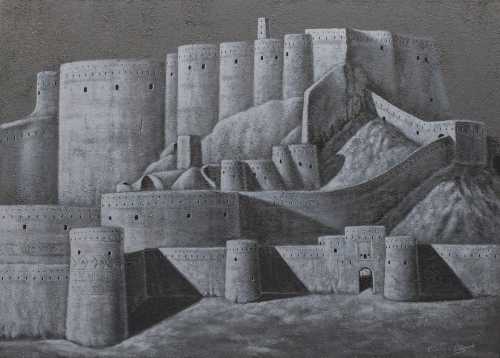About jamal-al-din Tabasi Nejad
Jamal-al-din Tabsi Nejad is a painter born in 1954 in Kermanshah and originally from Tabas. The themes of his works are related to Iranian themes, especially traditional architecture, along with the Saghakhaneh school.
Tabasi Nejad has a bachelor's degree in insurance economics from Allameh Tabatabai University. He also has a degree in fine arts from Busir Parish College in the United States. He also has an honorary doctorate in visual arts from the Ministry of Culture and Islamic Guidance. Tabasi Nejad is the founder of two art galleries named "Tabas" in Tehran and North Vancouver, Canada. Jamal Tabasi Nejad held his first solo exhibition in Tehran in 1991 at the Sheikh Gallery. In the same year, he was selected for the first Iranian painter's biennale at the Tehran Museum of Contemporary Art. The art centers of the United States, Japan, Kuwait, Qatar, etc., have hosted the works of this artist. He has also organized exhibitions at the Museum of Cultural Heritage and Contemporary Arts in Tehran. In addition to painting, he is skilled at sculpting and working with different materials such as stone, wood, and metal. The ability to restore old paintings and works of art is another one of Jamal-al-din Tabasi Nejad's skills. He also has a history of teaching drawing and painting in his portfolio.
Various materials, such as clay, metal, or wood, are used in the works of Jamal-al-din Tabsi Nejad. He used the technique of acrylic on straw in his exhibition, "A Flower for the World," which included 77 of his works. This exhibition was held in Reza Abbasi Museum on the occasion of the arrival of world tourism representatives to Iran. In his works, Tabasi Nejad pays attention to the background of Iranian culture and art. Many of his works represent the corners of traditional Iranian architecture, which are inspired by historical buildings such as the buildings of Kashan, Takht Jamshid, and Arg-e-Bam. He also uses other Iranian elements that are rooted in the country's culture. For example, in a painting called "Lock and Key," the artist has put a large number of old locks, which were used for the wooden doors of Iranian houses in the past, along with large and small keys on the canvas. The use of small metal windows and pieces of fabric, which represent the elements of Saghakhaneh, such as the shrine and Dakhil, is another example of this artist being influenced by the culture and traditions of the Iranian people.
The Most Expensive Artwork
At Auctions
First Attendance
1 July 2022
# Attendance
3
# Artworks
3
Average Realized Price
7,375 USD
Average Min Estimate
5,186 USD
Average Max Estimate
7,250 USD
Sell-through Rate
100%
Average Growth of Artwork Worth
17.825%
Timeline
The 22nd Tehran - Modern, Classic and Traditional Iranian Art auction
14 February
Resize exhibition
16 August
The 19th Tehran -Classic and Modern Iranian Art auction
24 January
Tehran- 16th- Iranian contemporary art auction
1 July
Gifting the World a Flower exhibition
4 September
